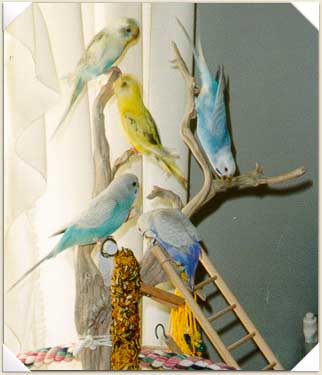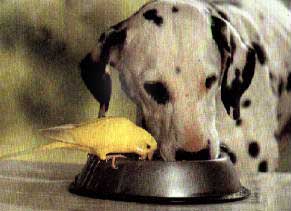

HistoryThe budgiegar was first recorded in the wild in the late 1700s by a colonist near Parramatta. Now the budgie has become the most popular cage bird in the world. It is however still a native species to the Australian mainland. Large flocks (sometimes in the tens of thousands) inhabit the open grasslands in central Australia, nesting in the spring and summer in the southern areas of the continent. The native budgiegar is a light green colour, with a yellow head and undulating black bands down the back of the head and wings. It si from these wild birds that the first domestic budgiegars were bred, and the species have evolved into the many varieties present today. The first captive breeding took place in Europe in the mid 1850s, leading to various colour and feather structured mutations. |
 |
 |
Man's Best...What?So, face it! The budgiegar has become the most popular cage bird in the world, not to mention
that it's the most popular pet. On top of all of this, the budgie has one million advantages
that one can think of. It's cuter than a dog, it can learn to talk, it's more colourful, and not
to mention cutter. How many times have you gone to school and made an excuse of this sort: "Hm..
my dog ate my homework!"? Well, we all know dogs can't literally "eat" your homework, but a budgie
can! It can chew on anything, and you'd be way better off having a budgie in this case. If
properly trained, it can also act as a wholepuncher.
|
 |